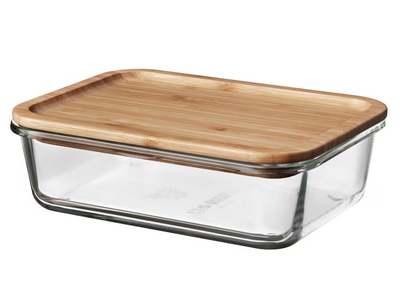Fridge Friday
- Every Little Thing
- Jul 29, 2022
- 7 min read
Updated: Apr 18, 2024

Do you really need to organise your fridge? I think yes - here's why it matters;
Why Organise your Fridge
Our fridge plays an essential part in our daily lives.
We are in and out of it multiple times each day as the first port of call to plan meals, drink, snack or just to see what new things have magically appeared when we're bored!
It's a small space that has to work hard, so it makes sense to put some effort into organising it so it can better support us each day and make our lives easier.
Planning and making meals is so much easier. It always feels so refreshing when our fridge is organised. I hate everything being piled in; I can't see what we have and then feel overwhelmed when it comes to making dinner.
I am much more inclined to cook when the fridge is organised.
Without a good system, food is more likely to go to waste. Things get shoved to the back and forgotten about, or we purchase items we already have.
An organised fridge can help us make better food choices and even transform our eating mindset. A healthy diet is essential to taking care of ourselves and living a healthy lifestyle, which means plenty of fresh vegetables, fruit and other fresh produce in our fridges.
Here are a few of my fridge organisation tips to help you make your fridge work better;
Declutter your fridge
Fridges benefit from a declutter just as much as kitchen cupboards and drawers - if not more.
And the great thing about a messy fridge is that it doesn't take long to tackle! In fact, because it's such a small space, it's a great opportunity to see progress and boost your self-esteem for larger decluttering and organisation projects that may be on your list.
The decisions needed to declutter should also be easy to make - you are going to eat it, or you're not. If you're not, it needs to go.
Ensure you have your recycling and compost/food bins handy to reduce as much waste going to landfill as possible.
Remove EVERYTHING from your fridge (yes, everything) and lay it out on your kitchen counter or table.
Sort items into broad logical categories (type of foods).
Go through each item one by one and check - is it still fresh? Will you eat it? If not, it's got to go.
Get rid of anything questionable.
Use this time to take stock of what you have, remove expired items and make plans to use up what has been sitting around a little too long.
FOOD WASTE
For expired items - empty the food contents into your food/compost bin and then rinse out hard plastics, glass or metal ready to put in your household recycling bin.
Any items that are still sealed and in date can be donated. Try your local food bank or community fridges, or give to family, friends or neighbours.
The OLIO app is also a great way to offer unwanted food to others in your community.
CLEAN
Whilst everything is out of your fridge, give it a good clean. Don't forget the inside of the door, the drawer/s, any containers you may have and the seal around the door (often neglected, but really satisfying to clean!).
Make sure you use a non-toxic cleaner. I like to use a bicarbonate of soda and warm water solution - it's a cheap, safe, effective kitchen cleaner that cuts through grease and helps to reduce smells.
HOW TO ORGANISE YOUR FRIDGE
Once you have edited, it's time to get organised. If you haven't already done so, group your remaining items into broad categories (e.g. dairy, meats, fruits, veggies etc.)
Create zones
Your organising goal is to make the items in your fridge visible and accessible and to maximise space.
The best way to do this is by using 'zones' - just like in the supermarket. Dairy together, meats together, fruits together, vegetables together, so that everything can be easily found and put away.
I also like an 'Eat Me First' zone to store leftovers and items that are going off soon.
You can also have additional zones specifically suited to you and your family - such as kids, lunches or wellness. Whatever works for you and the space that you have.
Set up the zones in a way that is intuitive to you.
What items do you use all the time? What do you want to use all the time?
If you are trying to eat more healthily, make sure the healthy stuff is the first thing you see - at the front at eye level if possible. Anything you don't want to eat as often, such as sweet treats and snacks, should go as high up as possible.
The right way to organise a fridge?
what should go where.
In almost all organising projects, I feel it's important to trust your intuition and make decisions about where items should be placed based on your habits and what works for you and your family. If you find it too difficult to maintain - you won't.
However, apparently, there is a 'right' way to organise your fridge in order to keep food fresher for longer.
Our appliances are often laid out (and sometimes labelled) for certain foods, so check your fridge manufacturers' guidelines for where is best to place each category for optimum freshness, longevity and food safety.
As a general guide;
Fridge Door (The least cold part) - Best for drinks, condiments and food with preservatives.
Top Shelf (The second warmest part) - Best for cooked meats, leftovers, snacks and drinks, and other items that can't contaminate others if there are any leakages.
Middle Shelf - Diary products
Bottom Shelf (The coldest part) - Best for raw meat and fish, which should always be in sealed containers.
Drawers - Fruit, vegetables and herbs.
NOTE: If anyone in your home has food allergies, extra caution will need to be taken to make sure foods are clearly separated and contained.
STORE + CONTain
The best way to keep your fridge and zones organised is to add containers. They give structure and help use all available space - especially important in small fridges.
Not only will containers help the fridge to remain organised and uncluttered, but having a defined space for each category also helps you easily take stock of what you have before heading to the supermarket.
You can either use one per zone, or contain and organise smaller items within a zone - for example, your dairy 'zone' shelf could have separate containers for eggs, cheese and yoghurts.
Clear fridge bins or trays are best so you can see the contents.
If you want to go a step further (and can manage the maintenance), you can decant your milk, juice or water into glass bottles or pitchers.
Measure any areas needing storage before you go shopping. Some fridge organisers are quite deep and don't fit into smaller-sized fridges.
Most fridges have adjustable shelves, so check if you can adjust to accommodate taller items and utilise all available height and space.
My favourite fridge storage products
IDesign Containers - They do a large range of fridge containers to suit every category and size of fridge. Good quality and last well. Cheaper versions are available from stores such as B&M or Walk, but they don't tend to last as long.
Glass and bamboo containers from IKEA's 365+ range - they also come in plastic versions, but the glass ones are also perfect for reheating leftovers.
OXO Greensavers for berries and chopped up fruit and veg. Expensive, but they do keep food fresher for longer.
Clear Turntables/lazy Susans for storing condiments in large fridges.
Old jam and mason jars - if you don't want to invest in new packaging, you can repurpose your old jars to store chopped-up fruit, veg and herbs. Just add some water to things like carrots and herbs to keep them fresher for longer. You can buy special herb keepers - but I find a jar works just as well.
Keeping your storage as uniform as possible helps to keep the fridge looking and therefore feeling more organised. You're more likely to keep it up if it's enjoyable to look at and use.
GET RID OF EXCESS PACKAGING
I prefer to get rid of packaging whenever possible. It's much easier to see what you have at a glance, and it helps to maximise space. It also reduces the visual clutter and makes your fridge look more organised.
LOVE LABELS
Labels help to make a home run more smoothly - so don't leave them out of the fridge.
Labelling the containers will help you and other household members identify where each category lives. Making it much easier to see when you've run out of something and where to put away the groceries.
Labels help prevent things from just getting shoved into the fridge. It's hard to do this when you have labelled containers saying this lives here! Your brain finds it hard to go against a label.
TIP - For more permanent category labels, you can use custom vinyl labels or paint markers.
For labelling things like leftovers that are not permanent, you can use chalk (or wine) markers so that you can easily wipe off and update.
When applying labels, make sure that the surface is clean and dry!
TIPS FOR MAINTAINing an organised fridge
Whatever system you create, taking time to maintain will mean you will always be able to find things quickly.
Declutter Regularly
Once your fridge is organised, it's much easier to maintain and keep clean. Once a week, check for any expired items or things you're just not going to eat and give the shelves a quick wipe down.
I purge our fridge every Friday in preparation for our Gousto order and shop on a Friday night - hence Fridge Friday! Not only does this make space for new items to fit properly, but it helps me keep tabs on what we need, what is regularly going uneaten or expiring too fast so I can adjust the shopping list if needed.
Keep Track of Expiration Dates
Whenever I open something we don't use that frequently but quickly expires, like relishes or salad dressing, I always write the expiration date clearly on the front of the bottle or jar with a marker pen. It's much easier to see if it's likely to be still ok to use, and it prompts me to check before we go to use it for a meal and find it is growing mould!
Shop your fridge first - then go shopping
See what you have (check your 'Eat Me First' section) and write down the things you'll need to buy to create a complete meal. That way, you're eating up what you have and not overbuying food.
Keep it Fresh
Do not put opened cans of food or uncovered plates/bowls in the fridge. Always transfer leftovers to sealed containers (I like the Ikea 365 Collection) to avoid unpleasant smells and make them last longer.
Applying some of these tips, you will be able to find items more easily, save you time and money, reduce food waste and hopefully help you to eat healthier!
As featured in...





Comments